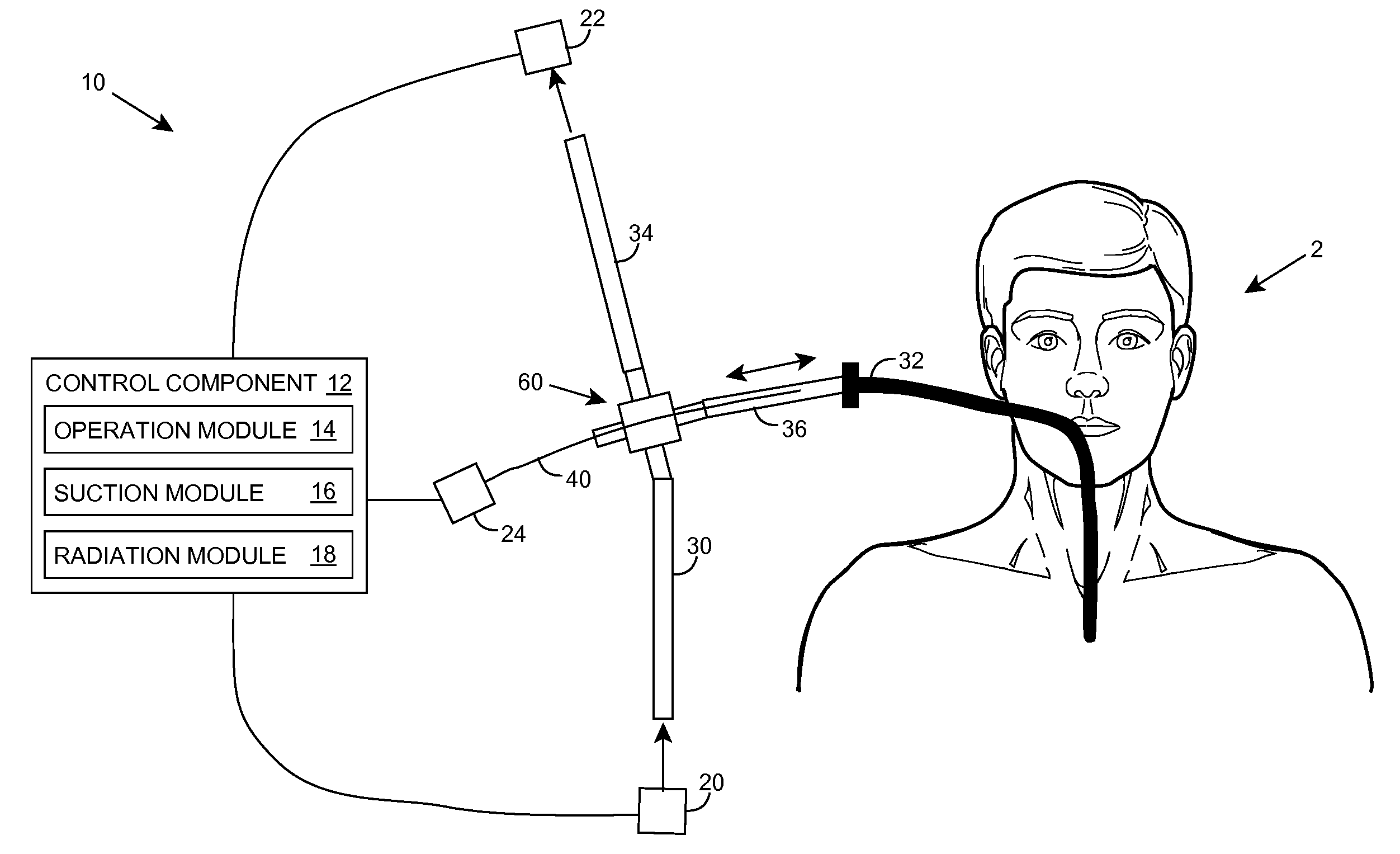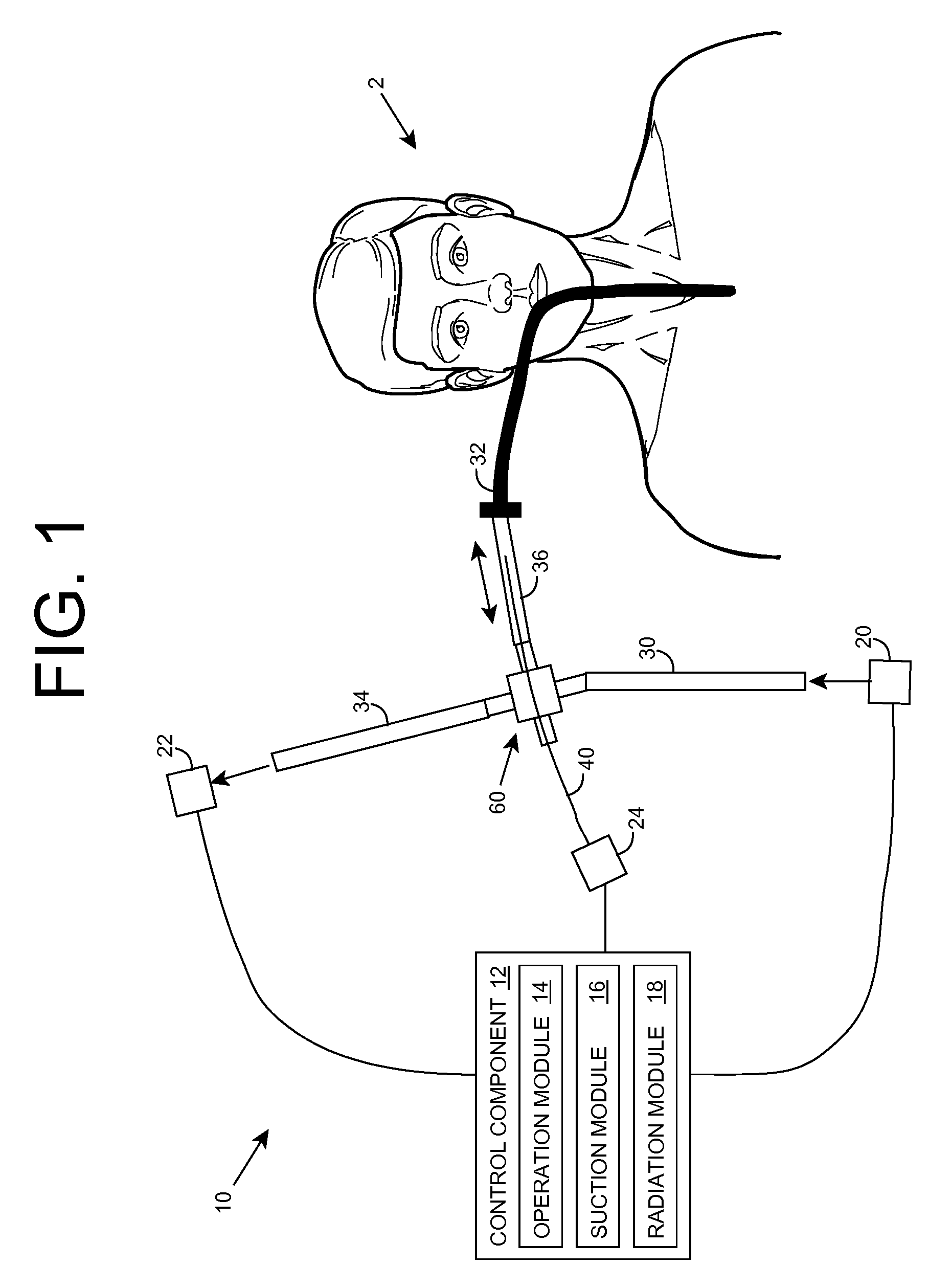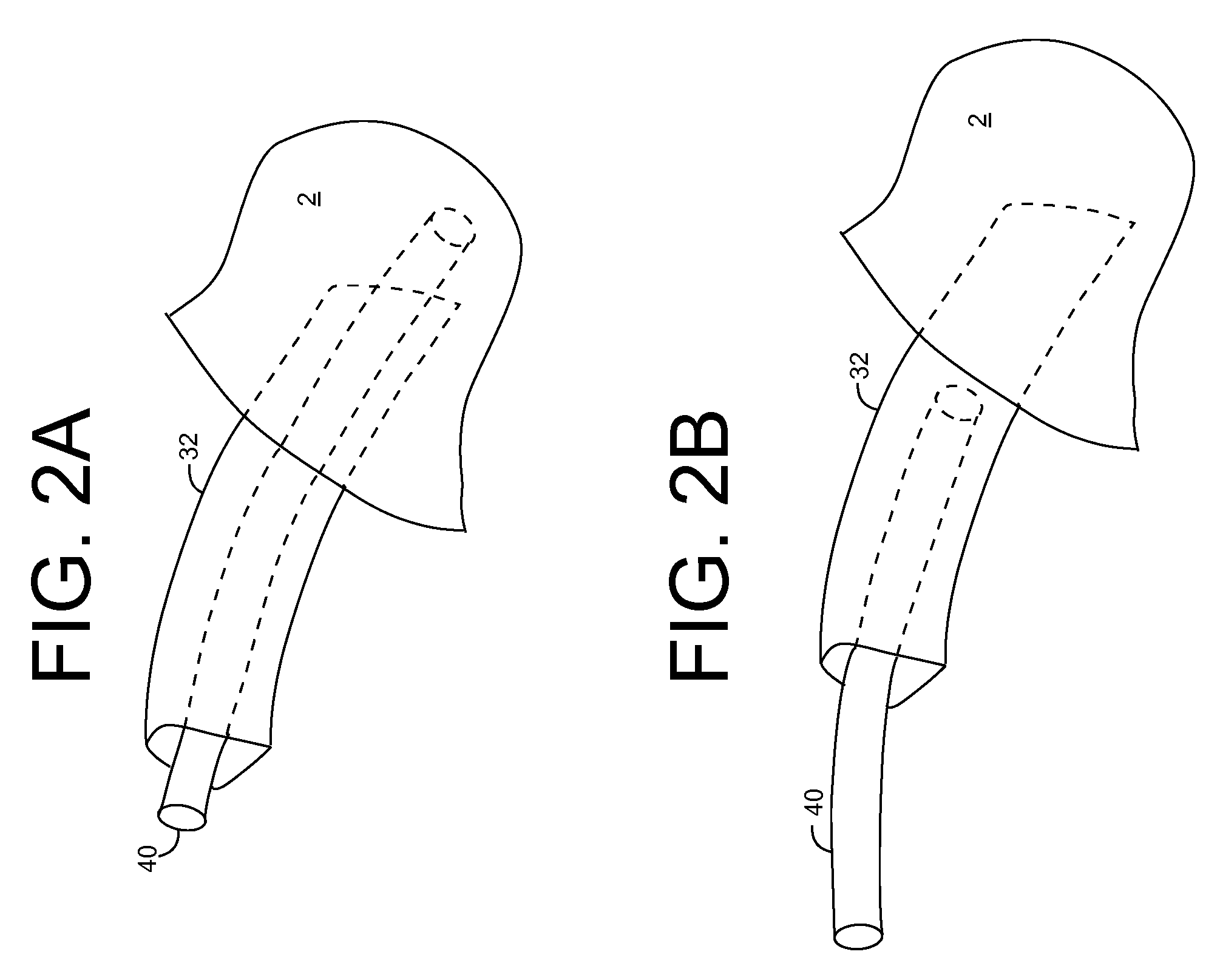Ultraviolet radiation sterilization
a technology of ultraviolet radiation and sterilization chamber, which is applied in the field of sterilization, can solve the problems of limiting the application of mercury-based water and/or air purification systems, limiting the use of mercury-based water purification systems in transportation or individual applications, and limiting the use of mercury-based water purification systems
- Summary
- Abstract
- Description
- Claims
- Application Information
AI Technical Summary
Benefits of technology
Problems solved by technology
Method used
Image
Examples
Embodiment Construction
[0021]As indicated above, aspects of the invention provide a solution for sterilizing one or more hollow components of a device, such as a medical device. Ultraviolet radiation having one or more predominant wavelength(s) and a sufficient dose is generated and directed to an interior side of the hollow component(s). The predominant wavelength(s) is / are selected to harm one or more target organisms that may be present on the interior side. The ultraviolet radiation can be delivered by a structure that is periodically inserted and retracted into the hollow component. The structure can be configured to provide additional cleaning capability, such as suction, for removing matter that may be present in the hollow component. The sterilization can be performed in a non-obstructive manner, which enables use of the component, and therefore the device, to continue during and after the sterilization. As used herein, unless otherwise noted, the term “set” means one or more (i.e., at least one) ...
PUM
 Login to View More
Login to View More Abstract
Description
Claims
Application Information
 Login to View More
Login to View More - R&D
- Intellectual Property
- Life Sciences
- Materials
- Tech Scout
- Unparalleled Data Quality
- Higher Quality Content
- 60% Fewer Hallucinations
Browse by: Latest US Patents, China's latest patents, Technical Efficacy Thesaurus, Application Domain, Technology Topic, Popular Technical Reports.
© 2025 PatSnap. All rights reserved.Legal|Privacy policy|Modern Slavery Act Transparency Statement|Sitemap|About US| Contact US: help@patsnap.com



